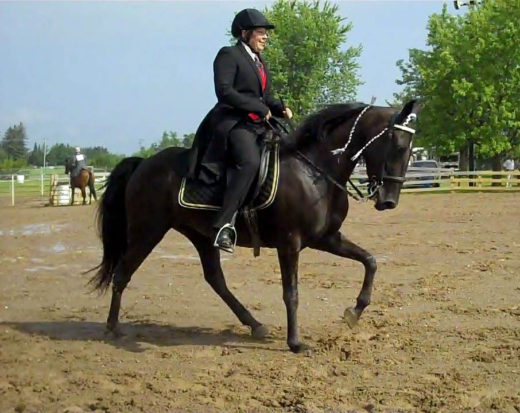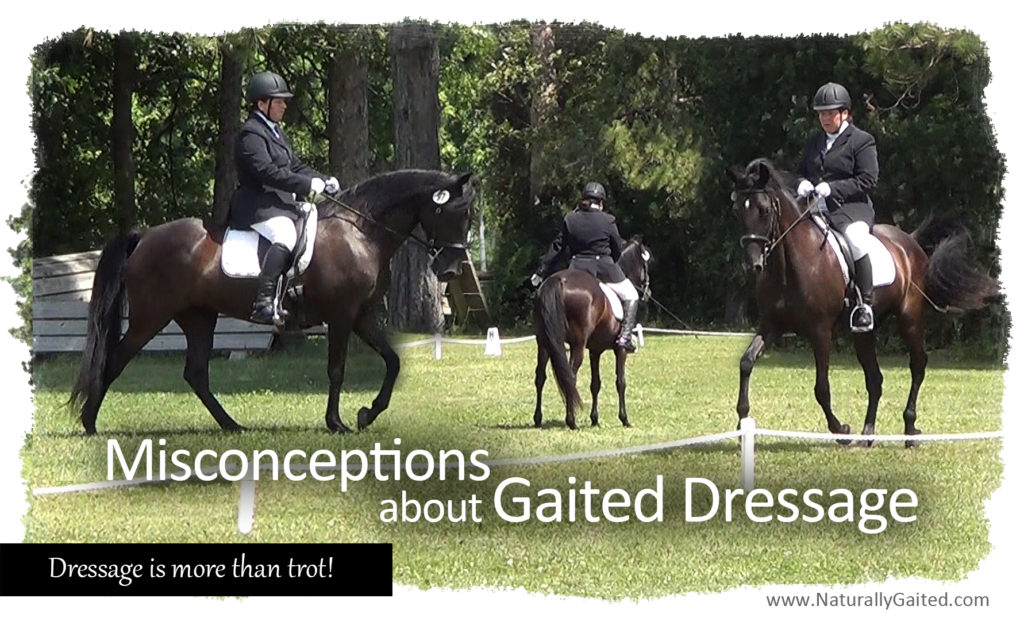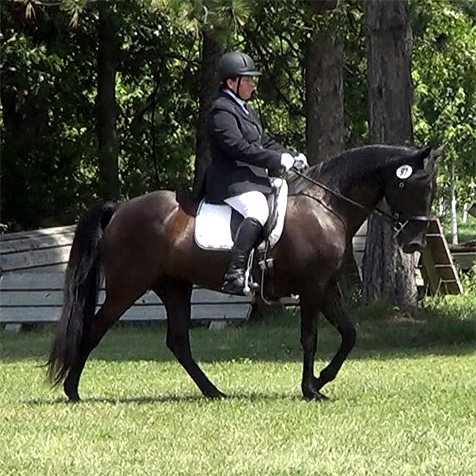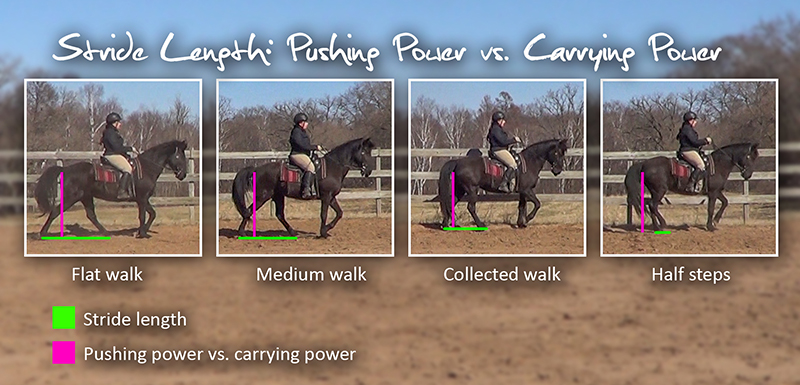Does dressage permanently alter the movement of a naturally gaited horse? How is competition dressage for gaited horses different than rail class? Is it possible to show your horse in both gaited dressage and rail class?
Misconceptions about Gaited Dressage
By Jennifer Klitzke
Have you heard these misconceptions about gaited dressage among your gaited horse friends: Dressage will make a gaited horse trot; cantering a gaited horse on cue will ruin the horse’s natural four beat gait; and dressage will destroy the gaited horse’s show gait?
Where do this misconceptions come from?
- Do people watch a recognized dressage show with non-gaited horses and believe that competition dressage makes horses trot?
- Do people expect to see show gait throughout a gaited dressage test?
- Do people believe that dressage permanently alters the length of stride when a gaited horse shows collected movements with shorter strides?
- Do people think that competition dressage is evaluated with the same criteria as rail class?
I have really good news! Dressage teaches the rider a balanced riding position and effective use and timing of rein, leg, seat, and weight aids. This is a communication system with the horse in order to improve the quality of natural gaits and develop the horse’s full range of motion. Dressage can even improve the quality of the show gait.
You can learn dressage with your gaited horse and reap these great benefits without ever showing. If you do show competitive dressage with your gaited horse, here’s more good news…
Gaited Dressage and Rail Class are Different
First of all, competition dressage and rail class shows are judged by different criteria. It is like comparing apples and oranges.
How Gaited Dressage is Evaluated
Competition dressage offers many levels and tests from Introductory two-gait tests to upper level three-gait tests. The high level tests demand higher levels of collection and engagement from the horse.
In competition dressage the rider and horse perform a test in front of a professional judge. The horse and rider are evaluated on how well the rider helps the horse execute the Pyramid of Training as they move through a series of required gaits, transitions, and movements precisely on the letter.
The 2019 Pyramid of Training:
- Rhythm (Regularity and Tempo)
- Suppleness (Elasticity and Freedom from Anxiety)
- Contact (Connection and Acceptance of the Bit
through Acceptance of the Aids) - Impulsion (Engagement and the
Desire to Go Forward) - Straightness (Improved Alignment and Equal,
Lateral Suppleness on Both Reins) - Collection (Balance and Lightness of the Forehand
from Increased Engagement)
Harmony and submission are factors in scoring, as well as the horse’s gait quality; the rider’s balanced position; and the rider’s effective use and timing of leg, seat, weight, and rein aids as the horse is ridden through the test requirements.
Competitive dressage is a great way to confirm where you and your gaited horse are at in your training. You’ll get written feedback by a professional dressage judge which can help you know where you need to improve or confirm that you and your horse are ready to move up a level.
How Rail Class is Evaluated

Rail class is a performed in a group of horse/rider teams. A judge will award ribbons for first through sixth place. The judge evaluates the horse’s movement according to the class requirement. For Tennessee walking horse rail classes, big strides and exaggerated head nods are prized.
To achieve a maximum length of stride, the horse needs to be positioned in a frame where the hind leg trails behind the tail and pushes from behind while the other hind leg steps deep under the body to pull the horse along. This frame positions the horse in a neutral to hollow back and flat croup where the push and pull of the hind legs activate the head and neck nod with each step.
The Rail vs Rider Aids
A horse ridden in rail class is predominantly ridden in straight lines along the rail. During a dressage tests, there is no rail for the horse to follow so the horse needs to be directed by the rider’s balanced riding position and effective use and timing of rein, leg, seat, and weight aids.
The purpose of the aids are to connect and channel the energy from the hindquarters through the body to a soft and round acceptance of the bit with even contact. The rider leads the horse through the test requirements of circles, transitions between gaits and directions, and lateral exercises. The goal is to produce soft, round, relaxed, engaged, and balanced movements for a score.
Why the show gait isn’t seen throughout a gaited dressage test
While show gait is achievable during portions of a dressage test when a flat walk or running walk along the diagonal is called for. The show gait becomes bio-mechanically impossible to maintain during collection while the horse performs small circles and lateral movements.

Here’s why. As the horse advances to higher levels of engagement and collection, the rider encourages the horse to bend the hindquarter joints, bring the back to a neutral to slightly round position, carry more weight from behind while lightening the forehand, and growing taller in the wither, head, and neck. The movement produced by this posture is biomechanically different than that of the show gait. This makes it impossible for the horse to push and pull with the hind legs and produce the same length of stride as in rail class.
Instead the horse’s steps are shorter because there is little to no trailing of the hind leg extending behind the tail. The collected gait shortens and the head nods less.
Does Dressage Permanently Alter Gait?
Does this mean that dressage permanently alters gait? Yes and no. Yes in the way that dressage helps the naturally gaited horse develop its full range of motion and improves the quality of its natural gaits—collected through extended.
No in the way that collected gaits or extended gaits are simply the response of a horse’s training combined with the application of rider aids that position the horse in the expression of gait. One set of aids allow more carrying power from behind for collected gaits. Another set of aids allow more push and pull for maximum stride length.
Dressage helps the naturally gaited horse develop its full range of motion so that even the show gait can improve in quality with deeper strides. Plus, dressage teaches the rider a balanced position and effective use and timing of the rein, leg, seat and weight aids.
Does dressage permanently alter gait? Yes it does, but in the best possible way.
Enjoy the journey!
Published in February 2014 Walk On, official publication of the World Walking Horse Association.



